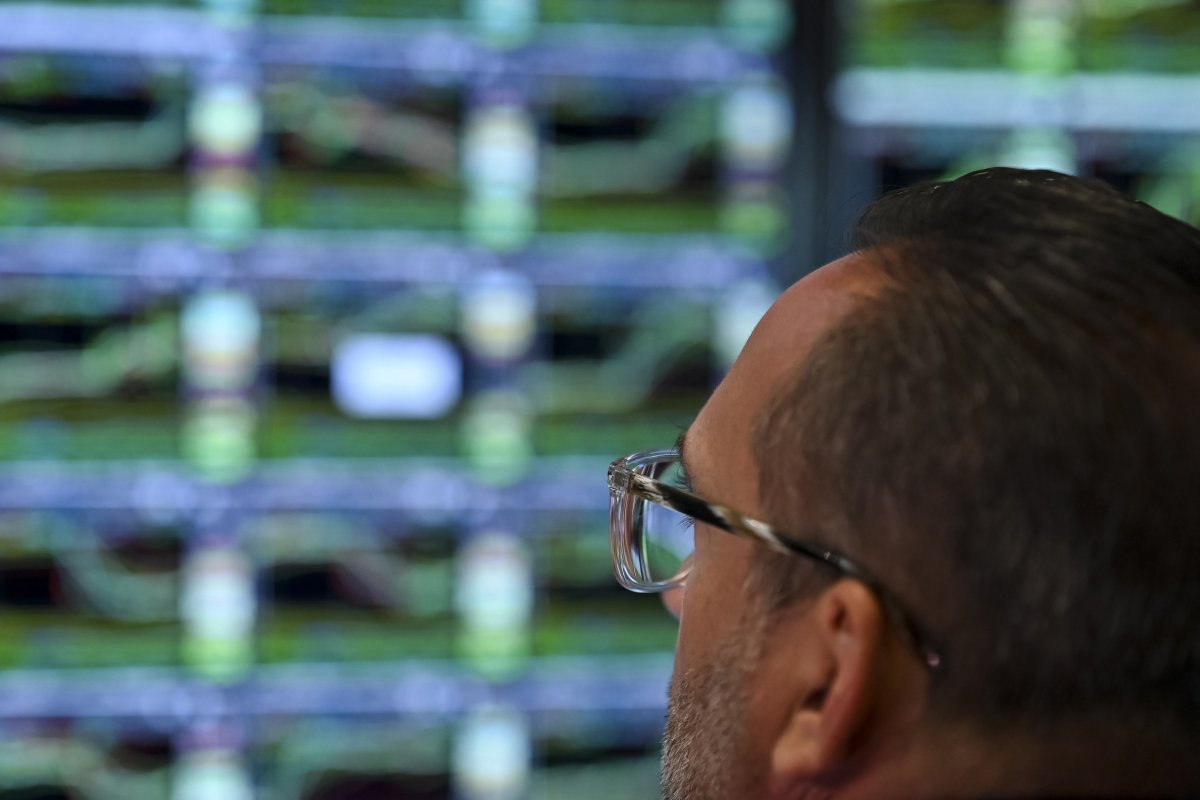The markets are sending us a message, and it isn’t subtle. Wednesday’s auction for 20 year U.S. bonds can only be described as a foreboding warning of what’s to come if Republicans press on with their “Big Beautiful Bill.” The softening demand for American debt is spiking borrowing rates and sending stocks into a tailspin. This isn’t something that we should cast off as just another bad day on Wall Street—it’s a glaring red flag about the sustainability of America’s fiscal trajectory.
The market mayhem wasn’t triggered by some mysterious economic force—it’s directly connected to mounting anxiety over the federal deficit and the impending fiscal fiasco that Trump and his congressional enablers are planning. Their multi-trillion-dollar spending spree they hope to ram through reconciliation without a single Democratic vote threatens to pour gasoline on America’s already smoldering debt crisis.

A trader watches a screen on the floor of the New York Stock Exchange (NYSE) at the opening bell on May 12, 2025, in New York City.
A trader watches a screen on the floor of the New York Stock Exchange (NYSE) at the opening bell on May 12, 2025, in New York City.
ANGELA WEISS/AFP via Getty Images
Let’s be perfectly clear about what’s happening here, the market is losing confidence in America’s fiscal management just as Republicans are preparing to enact policies that would massively expand our debt burden. Moody’s Ratings has already stripped U.S. debt of its triple-A rating, citing our rate of debt accumulation as a core reason for their decision—and that was before accounting for the estimated $3.8-5 trillion that Trump’s “One Big Beautiful Bill” would add to it over the next decade.
The market convulsions we’re witnessing now reflect the fundamental reality that the world is growing increasingly skeptical about America’s capacity to manage its debt. The bond vigilantes have awakened, and they’re demanding answers that Republican fiscal fantasies simply cannot provide.
What makes the Republican plan so catastrophically reckless is that we all can see exactly how this fiscal death spiral will unfold—and they’re choosing to accelerate into it anyway. Interest rates on long-term government bonds have already surged past the 5 percent threshold, but this is just the beginning. As fiscal credibility continues to erode, borrowing costs will climb as investors demand ever-larger risk premiums to hold American debt. Each fraction of a point in rate increase makes our fiscal position all the worse, which spooks markets further, which drives rates higher still. This feedback loop, once it takes hold, becomes virtually impossible to break.
But the true disaster comes when multiple foreseeable fiscal crises converge into a single perfect storm that will devastate working and middle-class Americans. Social Security benefits are already scheduled for automatic cuts of roughly 20 percent in 2033 when the trust fund runs dry. That’s not a distant problem—it’s less than a decade away. Meanwhile, Medicare faces similar pressures, with its trust fund projected to be exhausted by 2036. These aren’t hypotheticals—they’re locked-in fiscal cliffs that will arrive whether we’re ready or not.
Now imagine facing all of that while trapped in a fiscal death spiral. By 2036, if Republicans get their way, the best-case scenario is that we’ll be spending over $1.8 trillion annually just on interest payments. When the Social Security crisis hits in 2033, Congress will be asked to find hundreds of billions in additional spending to prevent benefit cuts to retirees, but they’ll be operating in a fiscal environment where that isn’t a realistic possibility. Meanwhile, we’ll be just three years away from a catastrophic shortfall for Medicare.
Every day we delay serious fiscal reform on these issues, the eventual correction becomes more painful and disruptive. Republicans are not just playing with fire—they’re dousing the economy in gasoline while multiple fuses burn toward it. Rather than prepare for the known challenges, Republicans want to make everything dramatically worse, right now, for the benefit of their wealthy donors. They’re gambling with the fiscal stability of the United States at the exact moment when we can least afford it. The markets see what’s coming, and they’re already demanding higher returns to compensate for the growing risk.
Nicholas Creel is an associate professor of business law and ethics at Georgia College and State University.
The views expressed in this article are the writer’s own.
